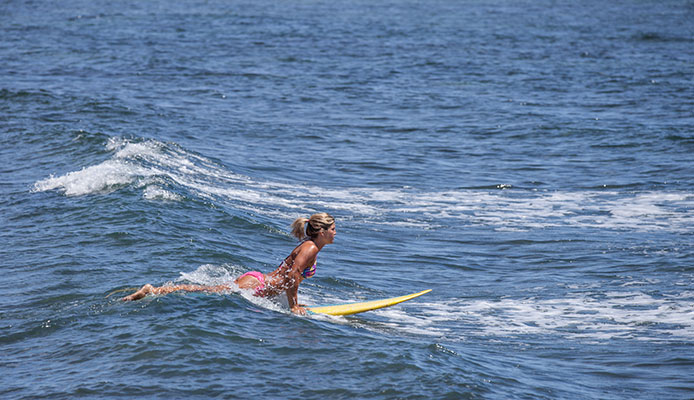
Bodyboarding is one of the most popular water sports nowadays. If you haven’t tried it yet, you should add it to your list of water adventures to try this summer. But what is bodyboarding exactly? Below we answer this question and several others, as well as outline the equipment required for bodyboarding for beginners.
What Is Bodyboarding?
So, what is bodyboarding? Simply put, bodyboarding is the art of riding waves while in a prone position (lying down on the board). This is very different from surfing where you’ll be in a standing position while riding the waves. Although bodyboarding is commonly known as riding waves in a prone position, other bodyboarding disciplines are also being practiced today, namely drop-knee and stand-up.
Accordingly, the Polynesian people were the first ones to ride a wave using their paipo boards in a prone position. They have been doing this for a long time even before stand-up wave riding or surfing ever came into being.
Why Try Bodyboarding Instead of Surfing?
Now that we know what is bodyboarding, you may be wondering what makes it a good alternative to surfing.
Well for one, it is much faster to learn bodyboarding for beginners. This is because they are lying down on the board as opposed to surfing where they will need to stand up. In this sense, because you don’t have to worry about getting up and standing on the board, you can start bodyboarding right away even if you’re just learning.
Another advantage of bodyboarding over surfing is that the former allows you to access waves that the latter can’t. This includes shore breaks, as well as super-hollow and fast-breaking waves.
Lastly, bodyboards are much more affordable than surfboards. Because of their small size, there is less expense in manufacturing them. Along that line, their small size also makes it easier to store them when not in use.
What Equipment Do I Need?
Those who research what is bodyboarding online are immediately interested in what equipment they will need. Well, you don’t need much to get started with bodyboarding. Below is all the equipment you’ll need for this sport.
Bodyboard
Getting the right bodyboard is essential to ensure total comfort and enjoyment while riding the waves. Thus, be sure to consider your height and weight when choosing a bodyboard. Think about the wave conditions where you’ll be riding the board as well. The perfect bodyboard will help a lot concerning control and maneuverability, and thus make it easier for you to have fun out in the water.
Bodyboards are generally made from various materials. Polystyrene bodyboards are known to be the cheapest and lightest, making them a good choice for children and first-time bodyboarders who are not ready to spend money on a better board. EVA foam bodyboards are durable and have a smooth underside to improve wave ride speed and performance. Polyethylene foam bodyboards have a solid foam or laminated underside, with a stiffness that can be adjusted thus making them more suited to advanced riders. Combined foam bodyboards are made from various materials including EVA and Polyethylene. They can be custom-made, which of course makes them rather expensive.
Bodyboard Leash
A bodyboard leash is important so that bodyboarders do not lose their boards if they ever get thrown off. The principle is pretty much the same as that of a leg rope and a surfboard. Arm leashes can be tied to the wrist or the upper arm, but most bodyboarders prefer the latter so it doesn’t get the way of their paddling.
Bodyboard Fins
Bodyboard fins are quite similar to swim fins except that they have shorter blades. They’re also quite stiff and this along with the short blades allows for rapid kicking in short bursts. A Velcro strap that goes right behind the ankle helps keep the fins in place and prevents them from slipping off while kicking.
You might also like: How To Bodyboard: Best Bodyboarding Tips
Swim Socks
Most bodyboarders will wear swim socks before putting on their bodyboard fins. Doing so helps to improve comfort and prevent chaffing and blisters. They also provide extra warmth for your feet and toes.
Wetsuit
If you’re bodyboarding in relatively cold waters then you’re going to need a wetsuit. These are pretty much the same as wetsuits for surfing, paddleboarding, and other water board sports. On the other hand, if you’re bodyboarding in warmer climates then a pair of trunks and a rash guard should be enough.
FAQ

Globo Surf Overview
Bodyboarding is one of the most enjoyable water sports around, and those who want to know more about what is bodyboarding and get recommendations for the best bodyboarding gear and equipment are advised to join a class in bodyboarding for beginners. There is no better teacher than the experience they say, and classes like these prove to be the best training ground for those who plan to enter the sport.

